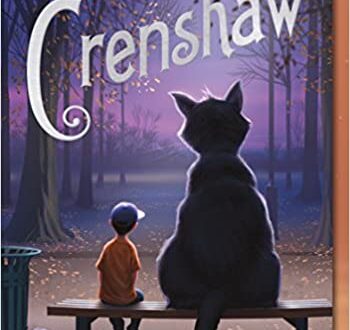-
Archeological Mysteries You Just Might Want to Explore
Welcome mystery lovers and antiquity detectives! Today we are going to be introduced to several ancient mysteries that have recently been solved—or have they?
A discovery two millennia in the making
For over 150 years experts have puzzled over a set of strange half-circles, found in France, and dated to the country’s Stone Age. Craftsmen crafted the first example of the ‘open rings’ from deer antlers, which was found in Le Placard Cave in southwestern France in the 1870s. Since then, researchers have uncovered 11 more. One of these was a so-called ‘preform’—a half-finished ring still attached to the antler—which was dated by researchers and found to be an enormous 21,000 years old.
Now a new study claims to have finally explained the rings’ unusual shape: they were finger grips for Paleolithic spear-throwers. A spear-thrower is a wooden shaft attached to a dart that was used for hunting large game, and the finger loop would have given the wielder extra grip and accuracy.
L’Anse aux Meadows, Newfoundland and Labrador, Canada
A discovery by a Norwegian couple in 1960 shattered the idea that Christopher Columbus was the first European to reach the Americas. L’Anse aux Meadows investigations confirm Vikings crossed the Atlantic 500 years before Columbus. Once they’d landed in America, a small community of Vikings set up camp in sturdy wooden huts—though it’s unclear whether the site functioned as a trading base or a colony. Nowadays, recreated buildings help modern visitors picture what life was like when the Vikings came to North America.
Hoxne hand axes, England, UK
When antiquarian John Frere found flint hand axes in a 12-foot hole dug by brick workers in Suffolk in 1797, he wrote to the Society of Antiquaries and ventured his belief that these axes were from a “very remote period indeed”—a controversial assertion when many still followed the Bible’s suggestion that the world was only a few thousand years old. But Frere wasn’t wrong, and modern tests proved that the hand axes date back at least 370,000 years. The flint tools are now housed in the British Museum.
Giza workers’ cemetery, Egypt
Traditional Egyptology has long held that slaves working in back-breaking conditions built the pyramids—a view propagated by the classical Greek historian, Herodotus. But an ancient cemetery uncovered at the turn of the 21st century suggests laborers able to quit at will actually built the pyramids. Those who died on the job had a respectful burial close to the tombs they built, which included jars of beer and bread for the afterlife. Not quite the riches of pharaonic burials, but these generous gifts have changed our understanding of social class in the deserts of ancient Egypt.
Gobekli Tepe, Turkey
For a long time, historians thought the Neolithic Revolution—when humans stopped being nomads and started living in permanent agricultural settlements—occurred around 10,000 years ago. That consensus lasted until the 1990s, when archaeologists working at Gobekli Tepe in southern Turkey used radiocarbon dating to pinpoint the site’s construction to 11,000 years ago, pushing the birth of human settlement further back into prehistory. Not only that, but some archaeologists working at Gobekli Tepe believe it may have been home to the world’s first temple. It’s well worth a trip to Turkey to see a monument twice the age of Stonehenge.
Now if you love solving mysteries, and you like adventures, who knows? Maybe someday you will become an archeologist and set out to explore the world and its ancient mysteries for yourself.
AIME
-
Eleven
Alex Douglas always wanted to be a hero. But nothing heroic ever happened to Alex. Nothing, that is, until his eleventh birthday. When Alex rescues a stray dog as a birthday gift to himself, he doesn’t think his life can get much better. Radar, his new dog, pretty much feels the same way. But this day has bigger things in store for both of them. This is a story about bullies and heroes. About tragedy and hope. About enemies with two legs and friends with four, and pesky little sisters and cranky old men, and an unexpected lesson in kindness delivered with a slice of pizza. This is Eleven: the journey of a boy turning eleven on 9/11.
For Readers 10-12 from author Tom Rogers.
-
The Mystery of Supergiant Stars
Hello star lovers and adventure-seekers! Today we are going to look at supergiant stars, galaxies, and star clusters.
Supergiant stars are among the most massive and most luminous stars in the universe. Super giant stars can have masses from 10 to 70 times greater than our Sun, and when it comes to brightness, some of them can be from 30,000 times or brighter than our Sun. In regard to their radius, super giants vary greatly, from 30 to 500, or even exceeding 1,000 solar radii. This means that some super giants are so large that they could engulf the orbit of Jupiter or even Saturn if placed at the center of our solar system.
Supergiant stars are classified by their temperature and color. The hottest and bluest super giants are of spectral type O. Super giants are also divided into different luminosity classes based on the width and shape of their spectral lines, which reflect their surface gravity and atmospheric pressure.
Supergiant stars are evolved stars that have exhausted the hydrogen fuel in their cores and have expanded their outer layers. They undergo nuclear fusion of heavier elements, such as helium, carbon, oxygen, neon, silicon, and iron. Depending on their initial mass, they may end their lives as supernovae or hypernovae, leaving behind neutron stars or black holes.
Supergiant stars are also evolved stars that have undergone nuclear fusion of heavier elements in their cores. The fundamental difference between supergiant and giant stars is their size and brightness. Supergiant stars are much larger and brighter than giant stars. They also have lower surface gravity and higher mass-loss rates than giant stars. Supergiant stars are more rare than giant stars, as they represent a short-lived phase in the evolution of very massive stars.
Astronomers measure the age of stars by using various methods that depend on the type and location of the stars. There is no single method that works for all stars, and some methods are more accurate than others. Each method has its strengths and weaknesses, and often astronomers use multiple methods to verify their findings. Measuring the age of stars is not an easy task, but it is important for understanding the history and evolution of our galaxy and the universe.
What is the difference between a galaxy and a star cluster?
A galaxy is an enormous collection of stars, gas, dust, and dark matter that are bound together by gravity. A galaxy can contain anywhere from a few million to a few trillion stars, and can span from a few thousand to a few hundred thousand light-years across. A galaxy can also have various shapes and structures, such as spiral, elliptical, or irregular. A galaxy is usually isolated from other galaxies, but sometimes it can interact or merge with them. There are billions of galaxies in the observable universe, each with its own history and evolution.
A star cluster is a smaller group of stars that are also bound together by gravity. A star cluster can contain anywhere from a few dozen to a few million stars, and can span from a few light-years to a few hundred light-years across. A star cluster can have various types and ages, such as globular clusters or open clusters. A star cluster is usually located inside a galaxy, but sometimes it can be ejected from it. There are thousands of star clusters in our own galaxy, the Milky Way, each with its own origin and fate.
The crucial difference between a galaxy and a star cluster is their size and number of stars. A galaxy is much larger and more massive than a star cluster and contains many more stars. A galaxy is also more complex and diverse than a star cluster, as it can have different components and features that a star cluster lacks. A galaxy is also more independent and stable than a star cluster, as it can survive longer and resist external influences better.
Now, with this new knowledge about stars and galaxies, take a really good look at your night sky the next time you have a clear evening sky to gaze at it. Exploring the universe is fun and exciting. Who knows? Maybe someday you may decide to become one of those space explorers who study the stars.
AIME
-
The Vork Chronicles Welcome to Superhero School
Welcome to Superhero School! Join Oliver, Jess, and all their friends on a mission to destroy the power-hungry, evil villains of Vork. From subterranean sewers to lush jungle, from dinosaurs to dragons, our heroes will be pushed to their limits in ways they’d never imagined. Will their collective Powers—Flight, Morphing, Invisibility, Mind Reading, and more—be enough for them to overcome the malevolence of Vork? Or will they stumble over their own doubts and painful histories? This action-packed journey of friendship, hardship, and humor will take our heroes to thrilling new heights and a deeper understanding of their own place in the world. But will that be enough—or will Vork always be one step ahead?
For Readers 8-12 from author Gracie Dix.
-
The Stars Beneath Our Feet
It’s Christmas Eve in Harlem, but twelve-year-old Lolly Rachpaul and his mom aren’t celebrating. They’re still reeling from his older brother’s death in a gang-related shooting just a few months earlier. Then Lolly’s mother’s girlfriend brings him a gift that will change everything: two enormous bags filled with Legos. Lolly’s always loved Legos, and he prides himself on following the kit instructions exactly. Now, faced with a pile of building blocks and no instructions, Lolly must find his own way forward.
His path isn’t clear—and the pressure to join a “crew,” as his brother did, is always there. When Lolly and his friend are beaten up and robbed, joining a crew almost seems like the safe choice. But building a fantastical Lego city at the community center provides Lolly with an escape—and an unexpected bridge back to the world.
For Readers 10-12 from The Coretta Scott King–John Steptoe Award winning author David Barclay.
-
Reaching for the Skies—Exploring the Wonder of Ferris Wheels!
Hello, young thrill-seekers and adventure enthusiasts! Get ready to embark on a breathtaking ride that will take you high above the ground and fill your heart with excitement. Today we’ll explore the history and appeal of Ferris wheels. Ferris wheels are more than just a dizzying experience. They are engineering marvels that offer panoramic views and unforgettable moments. So, buckle up, hold on tight, and let’s take a spin as we delve into the wondrous world of Ferris wheels, where fun and fascination await at every turn!
A Ferris wheel is an amusement ride consisting of a giant vertical revolving wheel with passenger cars suspended on its outer edge. It is commonly called a big wheel in the United Kingdom.
The Ferris wheel got its name from George Washington Gale Ferris, Jr. who made one for Chicago’s World’s Columbian Exposition in 1893.
With a height of 264 ft, the Ferris wheel was the tallest attraction at the World’s Columbian Exposition in Chicago, Illinois, where it opened to the public on June 21, 1893. It was intended to rival the 1,063 feet Eiffel Tower, the centerpiece of the 1889 Paris Exposition.
More than 100,000 parts went into Ferris’ wheel, notably an 89,320-pound axle that had to be hoisted onto two towers 140 feet in the air. Over the next 19 weeks of the World’s Columbian Exposition, over 1.4 million people paid 50 cents for a 20-minute ride and access to an aerial panorama few had ever seen before.
But when the fair gates closed, Ferris became immersed in a tangle of wheel-related lawsuits about debts he owed suppliers and that the fair owed him. In 1896, bankrupt and suffering from typhoid fever, he died at age 37. A wrecking company bought the wheel and sold it to the 1904 Louisiana Purchase Exposition in St. Louis. Two years later, it was dynamited into scrap.
So died the one and only official Ferris wheel. But the generic term Ferris wheel is now used for all such structures, which have become the most common type of amusement ride at state fairs in the United States.
Some of the largest modern Ferris wheels have cars mounted on the outside of the rim, with electric motors to independently rotate each car to keep it upright. People sometimes refer to these wheels as observation wheels and their cars as capsules. However, these alternative names are also used for wheels with conventional gravity-oriented cars.
A Ferris wheel (sometimes called a big wheel, observation wheel, or, in the case of the very tallest examples, giant wheel) is a nonbuilding structure consisting of a rotating upright wheel with multiple passenger-carrying components (commonly referred to as passenger cars, cabins, tubs, capsules, gondolas, or pods) attached to the rim in such a way that as the wheel turns, they are kept upright, usually by gravity.
Since the original 1893 Chicago Ferris wheel there have been nine world’s tallest-ever Ferris wheels. The current record holder is the 550 feet High Roller in Las Vegas, Nevada, which opened to the public in March 2014.
A Ferris wheel has fixed cars, but an eccentric wheel has cars that move as it rotates.
The two most famous eccentric wheels are Wonder Wheel, at Deno’s Wonder Wheel Amusement Park, Coney Island in New York City, and Pixar Pal-A-Round (previously Sun Wheel and Mickey’s Fun Wheel), at Disney California Adventure, California. The latter is a replica of the former. There is a second replica in Yokohama Dreamland, Japan.
So now that you know the history of Ferris wheels, enjoy the next one you ride.
AIME
-
The Proto Project: A Sci-Fi Adventure
When Jason meets his mom’s billion-dollar invention, an artificial intelligence device named Proto, he accidentally gets caught up in a mysterious adventure. Proto goes missing, and then people go missing. Now Jason and his coolest-neighbor-ever Maya must risk their lives to prevent global mayhem. But who is behind this devious plot? Is it another AI? The FBI? Or any other abbreviation with an I? What exactly is there to learn about artificial and human intelligence while fighting for your life against a legion of furry puppies or a battalion of drones? A lot—if you live to tell about it.
Jason and Maya set out on an adventure of a lifetime.
For Readers 8-10 from author Bryan R. Johnson.















